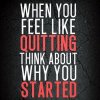So is the 1:42 HM accurate (Strava best effort)? If so, these are the Hansons paces based on current fitness:
View attachment 343445
Although we're still in summer, so these are the T+D adjustments:
View attachment 343446
Your 10 mile this morning was a T+D of 144 (73 + 71) which would have been a 4% adjustment (9:35-10:18 pace).
So for the sake of numbers, let's say this was a normal easy day. I find that the EB represents the average pace of a Hansons plan. So if we say a T+D of 144 is average for this time of year, then you're looking at a average pace of 9:35 min/mile. A 9:35 min/mile weekly average X 70 miles in a week equals 11:10:50 hours of training.
The upper limit for the normal recreational runner is about 10 hours. Many do not need to come close to this to maximize their potential and become a good "converter" (or the ability to translate shorter distance racing, like HM, to a M equivalent performance, see below). Being over 10 hours enters the special range for most. Once you get above 10 hours, then you're looking at a 6 day a week plan that would likely need double days to accommodate the durations of the workouts.
Right now the last few weeks you've been in the 8 hour range with most of the pacing in the "easy" range of 9:13-10:33 (relatively speaking). So it wouldn't be entirely surprising to hear that things are going well and you're feeling strong. That's a really good place to be training wise.
A 10 hour limit would put your maximum around 62 miles instead of 70 miles. Even a 10 hour goal time limit is still quite high. It comes down to the individual and whether they can tolerate a high training load. Like yourself I was able to maintain a training load in the 7-9 hr range without much issue. I then did my
Lakefront 2016 training plan which really pushed the boundaries of time. I said I had no issue handling less, so let's reach for more. This
Dopey 2017 training plan summarizes the results. I made myself a better runner, but not a better runner on race day. The plan ended up being too tough. So you, like most others, need to watch closely the workouts. They've got set paces you're aiming to hit. If you find yourself consistently not hitting the paces, or even worse fading during the workouts (faster at beginning and slower at end) it is a huge red flag that your body is not tolerating the workouts. It's moved into the "Don't survive the training, thrive because of it" area. Where your body is going to be so focused on recovery, and will never get an actual chance to adapt.
So, I can't say for certain 11.5 hours as a maximum is too much for you. But I can say, most don't need to do that much and if you choose to do that much, then focus on the fade of workouts as an early sign to change your plans. I would be careful having your recovery easy runs venture too far beyond the 60 min threshold too often as well.



 And thanks! I have not been thinking about weekly time on my feet.
And thanks! I have not been thinking about weekly time on my feet.

